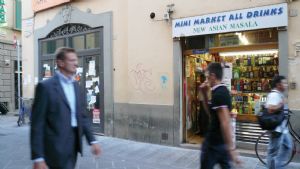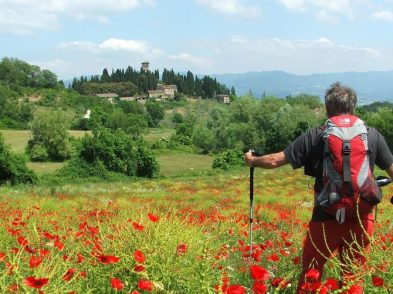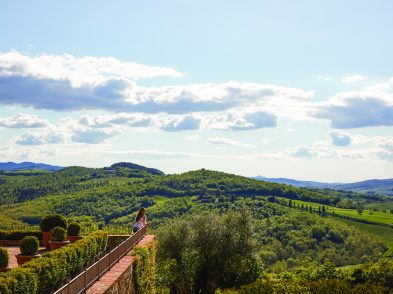Are your feet and back getting sore because you’ve been standing in line for hours? Are you fed up with going into a museum and finding a gaggle of people obscuring the exhibits like football players huddling over the ball? Are you annoyed at catalogues that make your arms ache because they are too heavy to carry, too heavy to send, and too heavy to read in bed? Then you have had your fill of blockbuster exhibitions for the moment. Break away. Get into your car, drive to Arezzo, and from there head towards Urbania, in the Marche, by way of either Città di Castello (over the Bocca Seriola) or Borgo Sansepolcro (over the Bocca Trabaria). Take one route coming, the other returning.
In Urbania, a small town of the former duchy of Urbino, you can visit the charming exhibition entitled L’Arte della Cura, or The Art of Healing, showing over 200 early books on medicine and botany from Urbania’s own Biblioteca Civica, and maiolica apothecary jars from private and public collections. This exhibition is set up in the Palazzo Ducale’s Sala Grande. While you’re there you can visit the rest of the Museo Civico in the Palazzo Ducale and see paintings, more maiolica, and two rare globes (terrestrial and celestial) made by Gerardo Mercatore in 1541 and 1551 respectively. There are also prints, modern as well as old master, most famously the monumental sixteenth-century Triumph of Charles V. The museum has a little shop in which you can buy books about Urbania, its architecture, and its collections, most of which are in both English and Italian. In conjunction with the exhibition – for which there is an informative, well illustrated, and reasonably sized catalogue – you can purchase soaps made from natural products and beautiful raw silk shawls dyed with vegetable colours: these items are produced in nearby Lamoli, at a former Benedictine Abbey, which is another stage in the itinerary of this exhibition.
For a little rest and refreshment go to the Bar del Teatro next to the Teatro Bramante (closed Monday). If the chairs are out in the piazza you can sit there and watch life roll by, or you can head for a pretty terrace at the back of the bar and relax, surrounded by greenery.
If you appreciate genuine Italian cooking, take the time to have a meal in Urbania. It is the home of the renowned Osteria Cucco (via Betto de’Medici, 0722-317412; closed Tuesday; tiny room, a reservation is recommended, pricey), and just down the Via Vittorio Emanuele from the Palazzo Ducale is the restaurant Big Ben (a witty reference to the bell tower of the Palazzo Comunale across the road), where you can get pizza as well as some of the most appetising pasta, vegetable, and meat dishes you will ever have eaten (0722-319795; open only evenings and closed all day Wednesday, more reasonably priced than Cucco). Also good is the Trattoria del Buongustaio, usually packed to capacity with regulars (via della Cereria, 0722-319411; closed Saturday; more economical than the other two).
If you came to Urbania by way of the Bocca Seriola and you want to return by way of Bocca Trabaria, you can head to Lamoli and visit the Museo dei Colori Naturali at the Benedictine Abbey Oasi di San Benedetto, where you will see the colours and fibres that were used to produce the silk shawls sold in the Urbania museum shop. If you haven’t already eaten, do so at the Oasi in Lamoli (0722-80133). The food is superb and plentiful. The setting is idyllic. You can even stay there in one of the many guestrooms. When you continue to Sansepolcro, visit the Aboca Museum (0575-733589), a third stage in the Urbania exhibition’s itinerary. Aboca is a modern company of international fame that makes herbal remedies, and their museum, with its theme Erbe e Salute nei Secoli, or Herbs and Health over the Centuries, is dedicated to the study of the history of the use of plants in medicine.
The exhibition in Urbania runs until October 30; the museum is open from 10am to 12pm and from 3pm to 6pm, but it is closed on Mondays. The entrance fee is 4 euros and the catalogue costs 20 euros.







